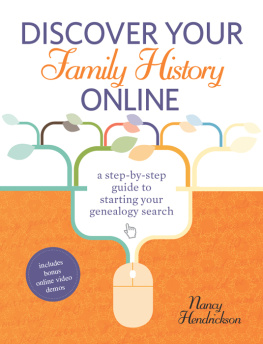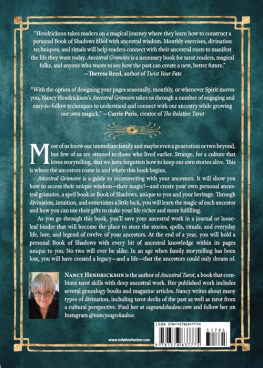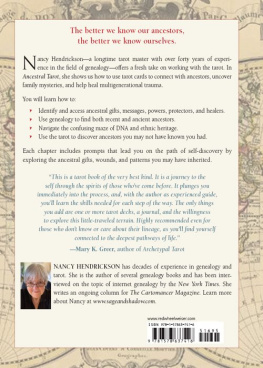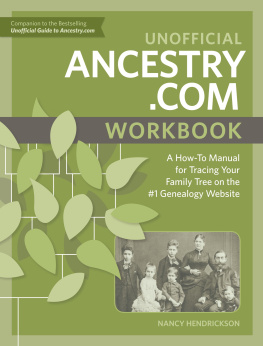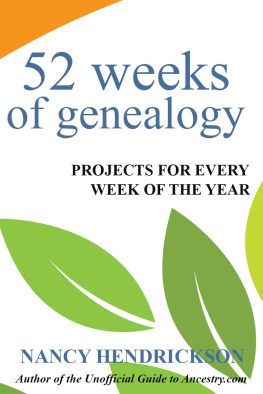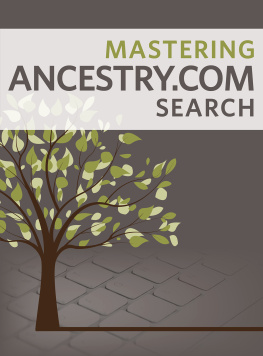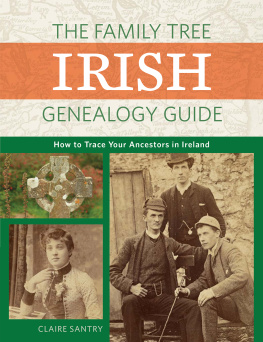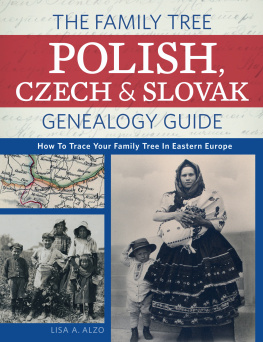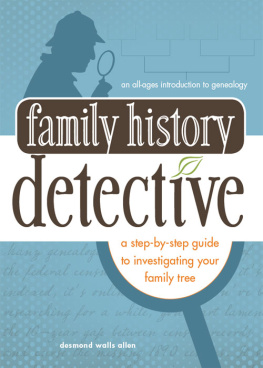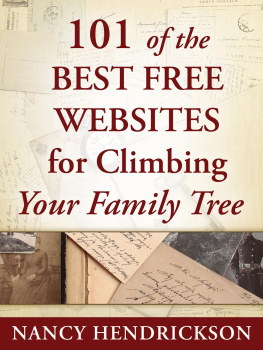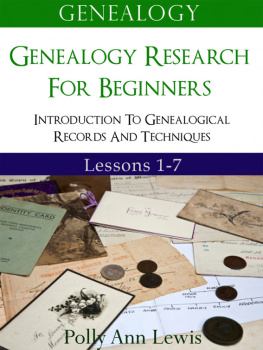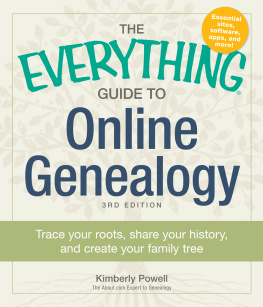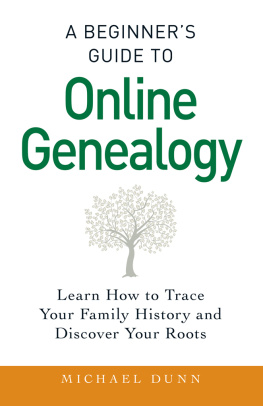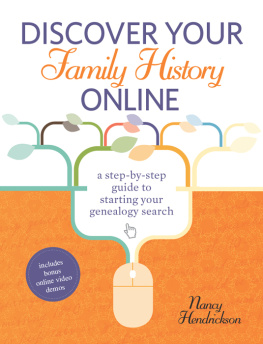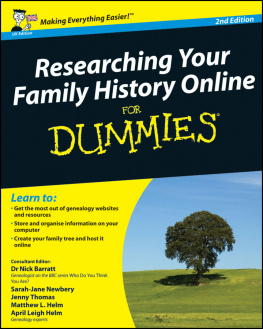F ew people had heard of the phenomenon called the internet when I first logged onto CompuServe in May of 1986. Back then, family tree information was scarce, unorganized, and hard-to-find.
Since then, millions of genealogy websites have sprung up. Some are well-known commercial sites like Ancestry.com and Fold3.com , but the majority are sites built by everyday genealogy enthusiasts who have a deep desire to share their family history with other seekers.
In truth, the largest percentage of my genealogy breakthroughs have been the result of finding personal websites created by people researching the same family lines.
Thanks to networking with other online researchers, Ive made tremendous strides in discovering more about the Dimmitt, Snow, Broyles, and Knox families. And Im confident that you can do the same, whether youre facing a Smith challenge or delving into the mysteries of the pre-1850 censuses.
If youre just starting in internet genealogy, this book will provide dozens of techniques to help you amass names and dates. If youre an old hand youll discover how to enhance those names and dates with maps, stories, music, news of the day, and photographs. Theres no end to what can be found.
In addition to the techniques youll learn in this book, Ive also created several videos that will work you through real-life search scenarios. Youll find the videos at < familytreeuniversity.com/W5972-video >.
Genealogy is a lifetime pursuit, so take your time as you work through each chapter, putting the strategies into practice. In the end youll be able to merge all that youve learned into a rich history of your familya history that can be shared today and treasured tomorrow.
Id love to hear of your successes with the techniques in this book, so please e-mail me your stories at .
1
Building Your Family Tree
Y ouve probably heard a few stories about your family history. You may have been told a distant ancestor arrived on the Mayflower or your familys lines go back to European nobility, Scottish rebels, or an Indian princess.
Whatever the stories, theyve sent you on a mission of discoveryto find the people who came before you.
If you watched the popular television series Who Do You Think You Are?, you may have noticed a common theme running through nearly every story. Each actor gained an understanding of how connected he (or she) is to his past, and often the actor recognized how similar he is to his ancestors.
As a science, genealogy is about proving the link from one generation to the next. As an avocation, genealogy provides hours of fascinating detective work. And as a philosophy, genealogy is, in the end, about self-discovery.
As you make your way through this book, youll learn the how-to of the science as well as the fun of the chase. When youre finished, youll have a deeper sense of who you really are.
So lets start with the science.
BEGIN WITH YOU
When you climb a tree, you start on the ground, work your way up the trunk, and then move out onto the branches. Use this same approach in genealogy.
Start on the ground (with you); climb up the trunk (your parents and grandparents); then venture out onto the branches (past generations). The higher you go in the tree, the less stable the branches! The further you go back in genealogy, the more challenging the journey. So lets start with you.
You know you were born, but can you prove it with documentation? You probably have a birth certificate, hospital record, or maybe a newspaper birth announcement.
If you begin documentation with yourself and carefully move backward, youll build a strong foundation from which to work. You may not realize it now, but as your genealogy research progresses youll see how having a solid (and provable) footing in each generation will lead to the clues that boost you higher up the tree.

Sample birth certificate, Cook County, Illinois, on FamilySearch.org
Collect Documentation
Start collecting proof or documentation of your life in your own home. This might be in the form of:
a birth certificate
newspaper clippings
military documents
birth certificates for your children
death certificates for immediate family members
marriage certificates
As youre looking for documentation about yourself, also look for documentation that provides information about your parents, grandparents, and more distant generations. In addition to the records listed above, look for:
journals and letters
family Bibles that list births, deaths, and weddings
deeds and wills
awards
photographs
INTERVIEW THE RELATIVES
Now that youve collected evidence sitting around your house, its time to interview your relatives. Begin with the oldest and work your way down to the youngest.
Your oldest relative probably remembers tidbits of family lore that no one else knows. These memories can be a tremendous aid in helping with your researchor they may just be scattered bits of trivia like, This is where your grandfather always bought gas, or Your grandmas favorite meal was biscuits and gravy. If the latter, save the tidbits for your family history book or scrapbook.
Thanks to computers, its easy to interview relatives by e-mail. Or, if they dont have e-mail, you can interview them by phone or in person. If possible, capture the oral interview on a digital recorder. Not only will the recording be a helpful resource as your research moves forward, but it also makes for a great family memento.
During the interview process you may hear some fantastic tales like, The family came over on the Mayflower. For now, the stories are just thatstories until proven. However, family lore often has some basis in fact, although the facts have probably been embellished over time.
For example, your family story may be that youre descended from George Pickett, of the famed Picketts Charge. This may be true, but its also possible your ancestor served under Pickett during the Civil War or was a fellow cadet at West Point. Bottom line: theres probably a Pickett connection, but not as a direct descendant.

